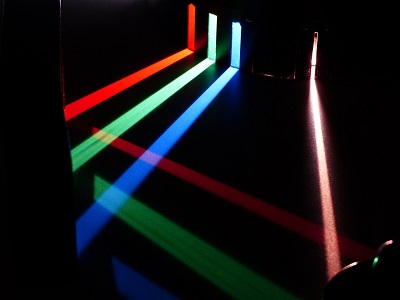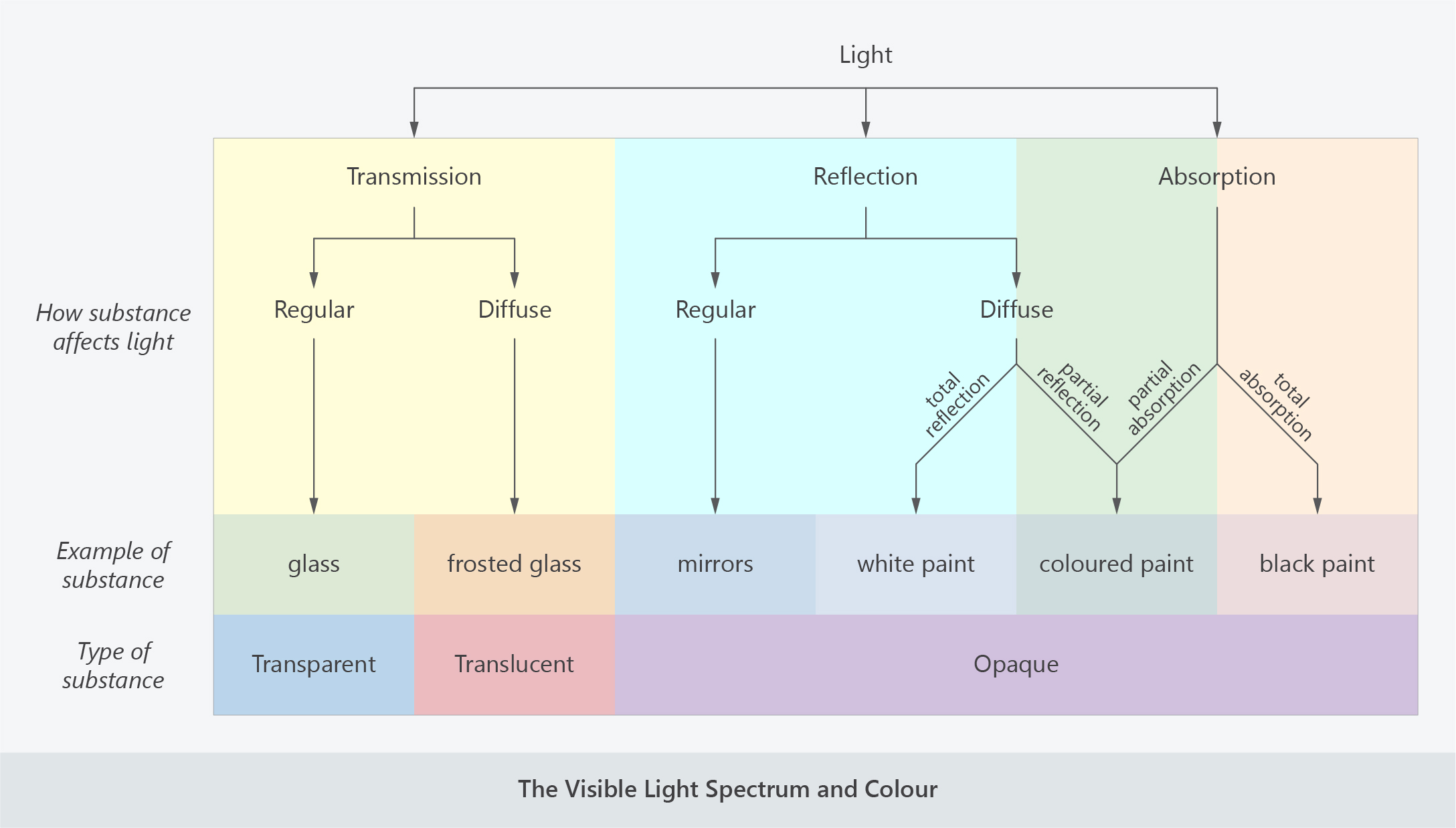This is a lesson summary. The full lesson can be viewed by purchasing an online course subscription.
Learning Objective
In this lesson we will learn how visible light is composed of colours with different wavelengths.
Learning Outcomes
By the end of this lesson you will be able to:
- Describe how light waves are electromagnetic waves.
- Describe how visible light (white light) is composed of colours with different wavelengths.
- Describe how light can be transmitted, reflected or absorbed by substances.
- Differentiate between transparent, translucent and opaque substances.
- Explain how we perceive different colours.
- Describe how light and pigments combine to form different colours.
- Describe polarised light.

(Image: Hans, Pixabay)
Lesson Summary
- Light is a type of electromagnetic wave that is visible to the human eye.
- Light waves are produced by hot objects such as the sun, light bulbs and certain chemical reactions.
- Objects that emit light are described as luminous.
- Objects that do not emit light are described as non-luminous.
- The visible light spectrum is made up of different colours, which have different wavelengths.
- From longest to shortest wavelength, these can be divided into:
- Red, orange, yellow, green, blue, indigo and violet.
- Light that contains all wavelengths of the visible spectrum, such as sunlight, is known as white light.
- When light waves encounter matter, three things can happen:
- Transmission – light passes through the substance.
- Regular transmission – light passes directly through.
- Diffuse transmission – light is scattered as it passes through.
- Reflection – light bounces off the substance.
- Regular reflection – light is reflected directly.
- Diffuse reflection – light is scattered as it is reflected.
- Absorption – light is ‘trapped’ by the object, where its energy is transformed into heat.
- Transparent materials allow direct transmission of light.
- Translucent materials allow diffuse transmission of light.
- Opaque materials transmit no light.
- Coloured objects reflect the wavelengths of light that correspond to that colour, while absorbing all other wavelengths.
- White objects reflect all wavelengths of light.
- Black objects absorb all wavelengths light.
- Light is composed of three primary colours – red, green and blue.
- Combining light of two primary colours produces the secondary colours – cyan, magenta and yellow.
- Combining light of all three primary colours produces white light.
- Combining different colours of light is known as additive mixing and is often referred to as RGB colour.
- Physical colour is composed of the three primary colours, cyan, magenta and yellow, which combine to produce the secondary colours, red, green and blue, or black when all three are combined.
- Combining different colours of pigments is known as subtractive mixing and is often referred to as CMYK colour.
- Unpolarised light involves oscillations on multiple planes.
- Polarised light involves oscillations on a single plane.
- Polarisation of light involves the transforming of unpolarised light into polarised light, for example, by using a Polaroid filter.

(Header image: Wolfilser, Adobe Stock)
